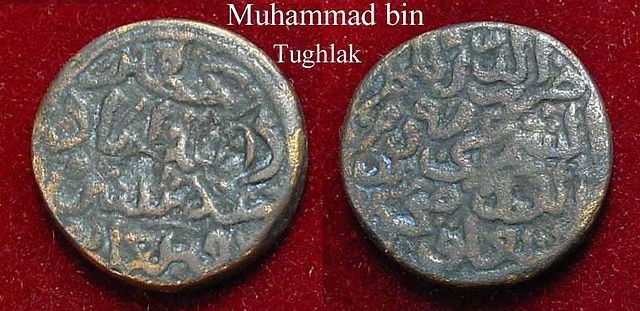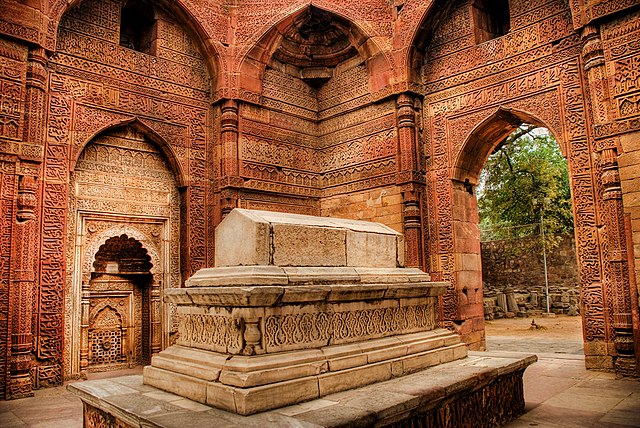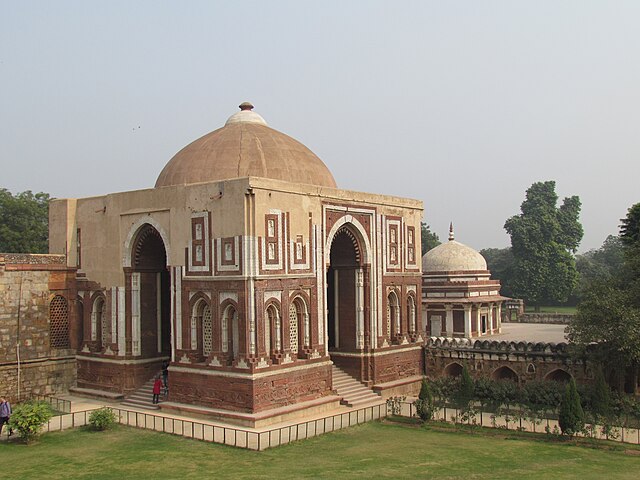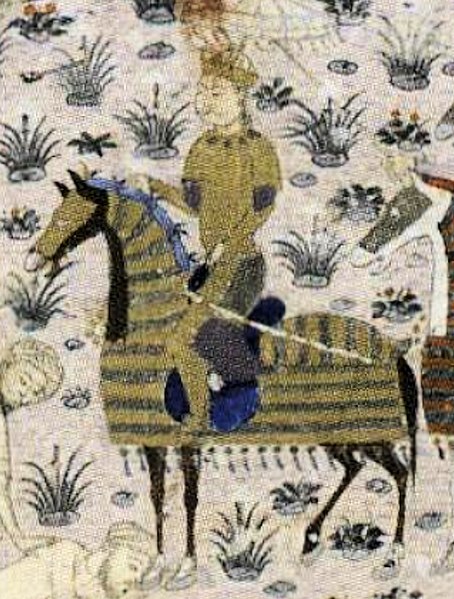The Tughlaq dynasty was the third dynasty to rule over the Delhi sultanate in medieval India. Its reign started in 1320 in Delhi when Ghazi Malik assumed the throne under the title of Ghiyath al-Din Tughluq. The dynasty ended in 1413.
Ghiyath al-Din Tughluq leading his troops in the capture of the city of Tirhut, from the Basātin al-uns by Ikhtisān-i Dabir, a member of the Tughluq court. Ca.1410 Jalayirid copy of 1326 Tughlaq dynasty lost original. Istanbul, Topkapi Palace Museum Library, Ms. R.1032.
Gold coinage of Muhammad bin Tughluq. 1325-1351 CE
Muhammad Tughlak orders his brass coins to pass for silver, 1330 CE
A base metal coin of Muhammad bin Tughlaq that led to an economic collapse.
The Delhi Sultanate or the Sultanate of Delhi was a late medieval empire primarily based in Delhi that stretched over large parts of the Indian subcontinent, for 320 years (1206–1526). Following the invasion of South Asia by the Ghurid dynasty, five dynasties ruled over the Delhi Sultanate sequentially: the Mamluk dynasty (1206–1290), the Khalji dynasty (1290–1320), the Tughlaq dynasty (1320–1414), the Sayyid dynasty (1414–1451), and the Lodi dynasty (1451–1526). It covered large swaths of territory in modern-day India, Pakistan, and Bangladesh as well as some parts of southern Nepal.
Tomb of Iltutmish (r. 1211–1236) in the Qutub Minar complex.
The Khaljis captured Jaisalmer Fort in Jaisalmer, Rajputana, in 1299.
The Alai Darwaza, completed in 1311 during the Khalji dynasty.
Depiction of Ghiyath al-Din Tughluq, founder of the Tughlaq dynasty, in the Basātin al-uns by Ikhtisān-i Dabir, a member of the Tughluq court and an ambassador to Iran. Ca.1410 Jalayirid copy of 1326 lost original.








